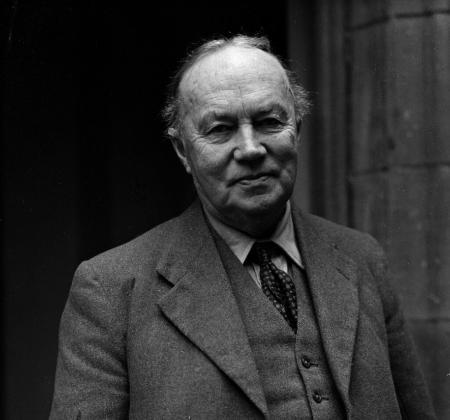Lord Lindsay and the Keele Vision

Interdisciplinarity has been part of Keele’s history since the institution received its Royal Charter in August 1949.
Our first Principal, Lord Lindsay of Birker (1879-1951) was committed to a broader kind of university study, and before the First World War had campaigned to introduce a degree programme in Politics, Philosophy and Economics at the University of Oxford.
Lindsay was a philosopher and believed that his subject of study cast light on other traditional subjects. He felt there was a risk that specialized study of a single subject at degree level might not produce the undergraduates that society needed.
The PPE programme at Oxford was launched in 1922, and Lindsay went on to extend this vision to natural sciences.
The idea for a university in North Staffordshire grew up in the interwar period and was connected with Lindsay’s educational outreach work. There were strong links between Oxford and Staffordshire, fostered in the Potteries area by the economic historian R. H. Tawney (1880-1962). Lindsay and Tawney both believed that higher education was not just for the privileged few.
The original Keele curriculum marked, in the words of the historian Christopher Hill, ‘a decisive break with those of traditional universities’, a ‘turning point in English educational history’. All degrees took four years to complete and began with a year of ‘foundation studies’. Students were then able to follow two ‘principal’ subjects of study at a more specialized level, with some ‘subsidiary’ subjects intended, as Lindsay himself put it, ‘to break down the rigid division between science and arts students’.
It was called ‘the Keele experiment’.
Much has changed since Keele’s first students arrived in October 1950. But we still offer a Foundation Year option, and we continue to provide ‘Combined Honours’ degrees in which two subjects are studied over three years. Our students are a highly diverse community and many of them have the option to take one of six ‘Global Challenge Pathways’ which bring arts and science students together to discuss key topics of our time – a contemporary manifestation of Lindsay’s original vision.
“We have tried to build a placeWhere liberal arts may thrive”(Students’ Song-Book, 1950-1951)Sources
Hill, Christopher, Typescript obituary for A. D. Lindsay, 1951 (Keele University Library, Lindsay Papers L145)
Lindsay, A. D., Typescript for article in the Birmingham Post (17 April 1951) (Keele University Library, Lindsay Papers L217)
Students’ Song-Book, 1950-1951 (Keele University Library, Lindsay Papers L217)

